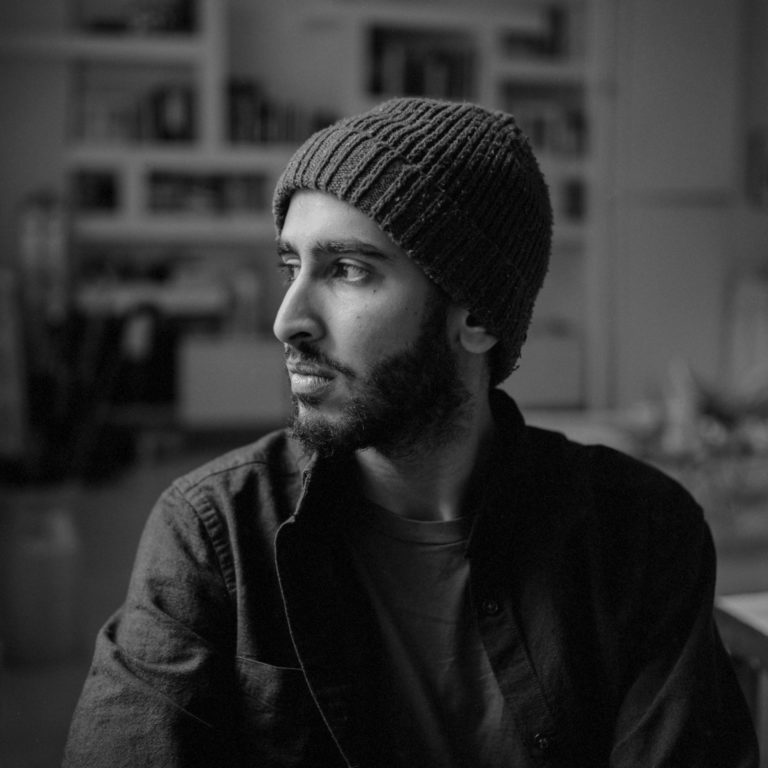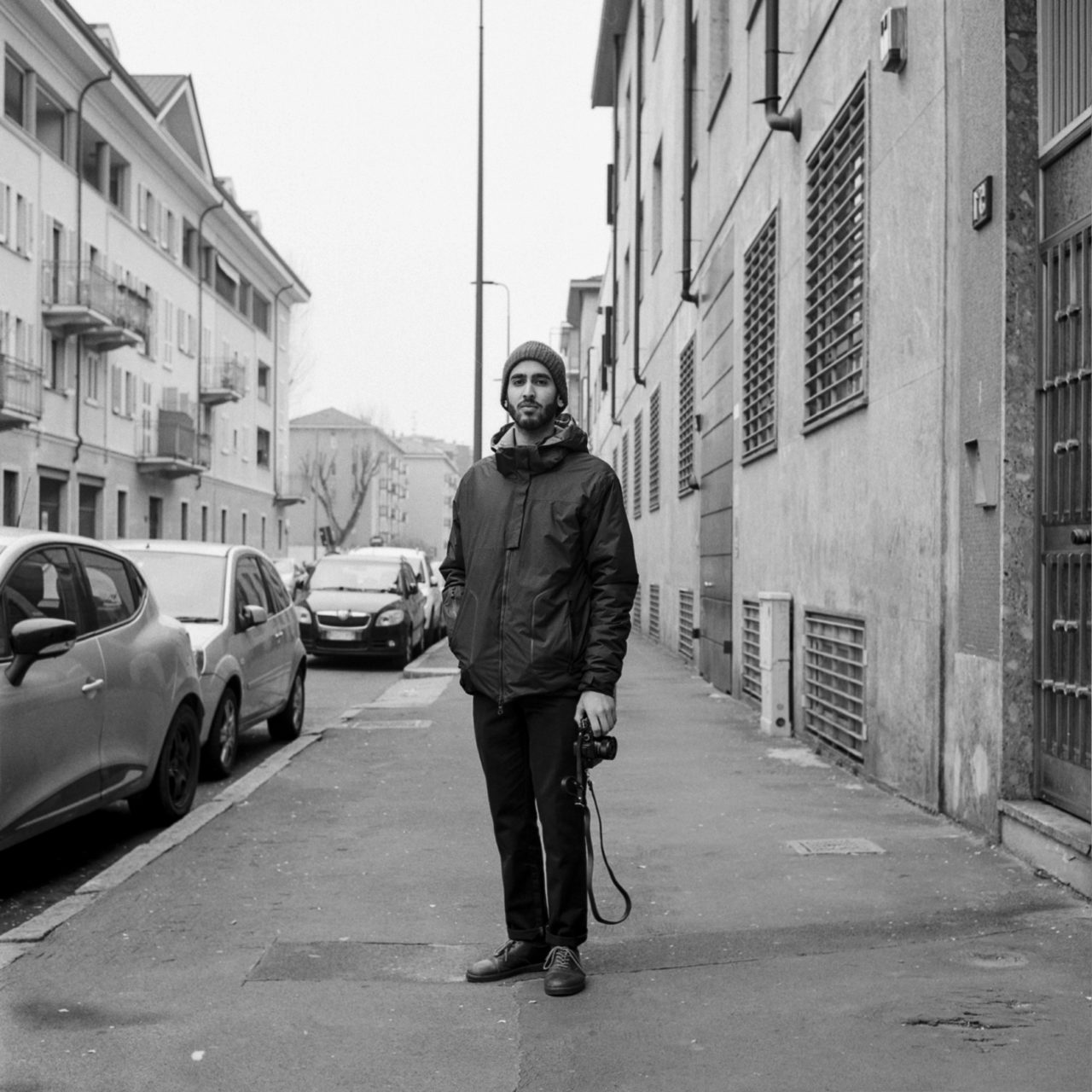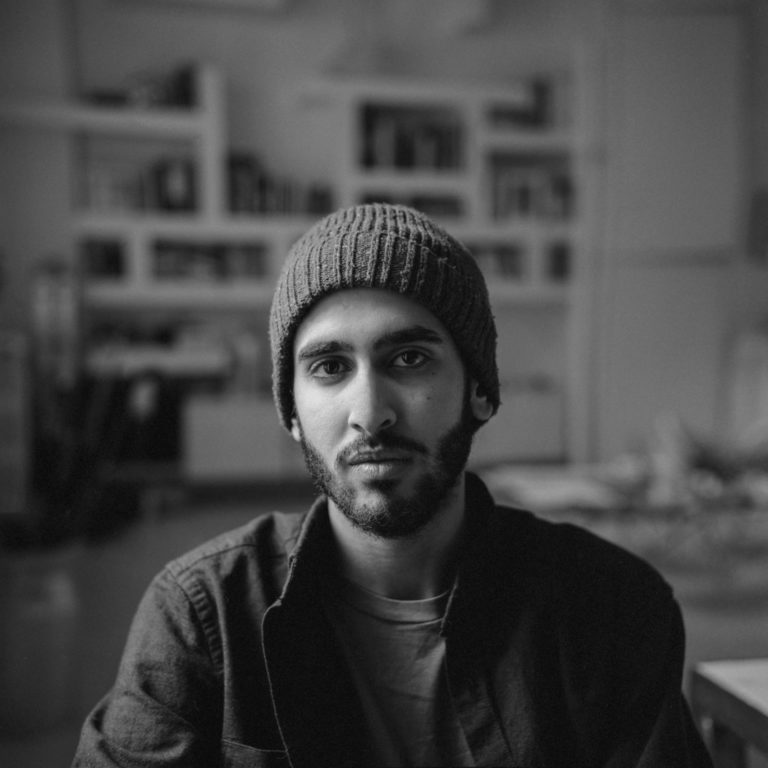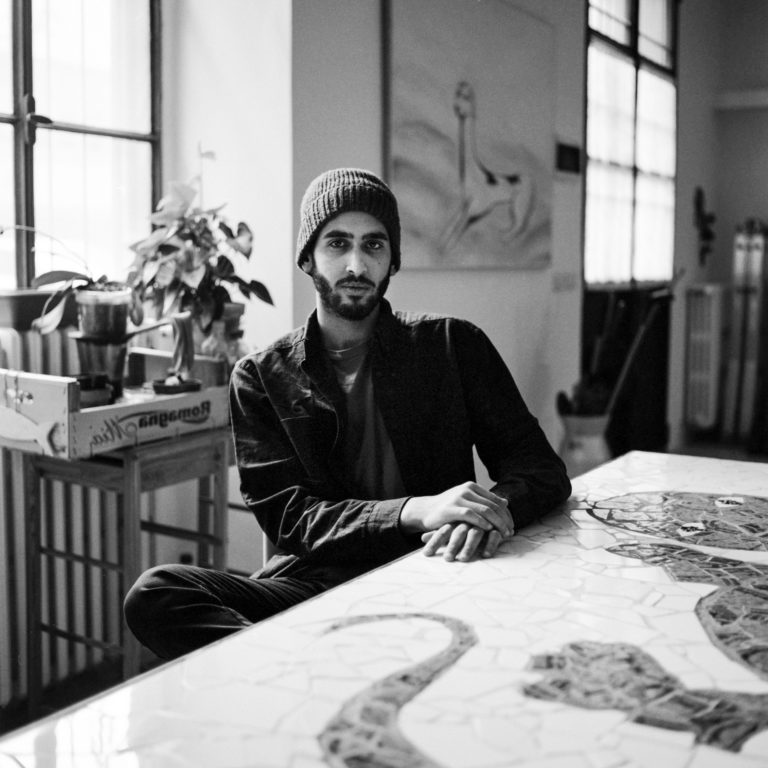NAAR: Can you tell us about your yearly trips to Morocco?
Karim El Maktafi: Yes, every summer we go with my parents by car, through France, Spain, Gibraltar. There is a boat from Genoa but we prefer to go by car. We started doing that when I was really young and we continued. Also it’s more comfortable to have our own car because we move a lot once there. The city of my father is Bouznika and my mother’s family is from Fqih Ben Salah.
NAAR: In an interview for Vice you said that second generations feel like strangers in their home country and in the country of their parents. I heard that all my life but I never understood why and how. Is it the way people look at you?
KEM: When I’m in Morocco, my darija is not perfect, my accent is a little bit strange. When I go into shops, people understand very fast that I’m not from the country and start speaking to me as if I am a tourist. They start doing things as putting the prices up… Also the problem comes from my family and relatives. When I’m there they warn me : “You’re not from here so pay attention ”. Not only when I was a kid, also now.
NAAR: What about racism in Italy?
KEM: After the terrorist attacks, it’s started being stronger. I realize people are sometimes looking at you in a strange way, angry even sometimes. You take a train, people look at you. There was no terrorist attack in Italy but people are afraid of all the Arab world. Also there is a lot of refugees coming and Italian people seem not to accept it, and politicians use this issue a lot within their campaigns.
NAAR: Here in the north also?
KEM: Especially in the north. People seem to be less racist in the south. I don’t know why, I think in the south of Italy people are more open-minded.
NAAR: Do you think this racism is a problem in your work, or in the contrary is having Moroccan origins an opportunity?
KEM: To me it’s an opportunity to know two cultures and to belong to both of them, and I also use this strength in my work. Trying to understand my origins is my topic now in my photography, the topic of identity. I just did this project about my double identity, part Italian, part Moroccan [Hayati]. I’m also into a long term project on Morocco, trying to understand the Moroccan identity. Because when I’m there, I’m not fully aware of what the Moroccan identity is, because it’s very complex. I want to use this project to understand myself but also to understand things, places in Morocco. It is going on very slowly because I’m trying to figure out how to do it, what I want to talk about and how to tell it in the best way. Identity is an enormous topic.. I’m researching a lot. I’m hoping to go back in August but one month is not enough, I’d like to try and stay one year there. I want to discover Morocco better. I travelled a little bit but I would like to see all of Morocco. As I said, this project is long term, so I can close it next year or I can close it in 15 years.
NAAR: What brought you to explore this part of your identity?
KEM: My art director when I was in residency at Fabrica suggested me to do this. He told me I had to find something that just I and no one else would be able to work on. Something that I knew very well and that interested me. So I started thinking about it. It was really hard because, if you are going to talk about your own life, you have to do an introspective work first, understand who you are. Then also, I was fighting about photography everyday with my family, because they don’t understand what I’m doing, they don’t understand what photography is. Also in Morocco, people don’t care about photography, they are scared about it even. When you take a picture of someone in the street, they are scared about how it’s going to be used, maybe online, without their permission.

Identity is an enormous topic. I’m researching a lot […] this project is long term, so I can close it next year or I can close it in 15 years.
NAAR: You talk about two sides of your identity. One is your family, your values, your traditions, who are Moroccan. The other is your social life, your friends, that are Italian. Do they live side by side or do they cross ways sometimes?
KEM: That’s a hard question! I’m living in the middle, so I can choose. I would like these two sides to meet at some point but for now I think they don’t match too much. When you are young it’s hard growing up in the middle, there are things you don’t understand. The Italian school might teach you some things and then you go back home and they might teach you something pretty different, you need to find a balance. There are a lot of people who live here as they would in Morocco, and also a lot who choose only the Italian part, I’m trying to take the good things from both sides.
NAAR: And what about your family? Do they live the same way they would in Morocco?
KEM: They try to, because they miss Morocco a lot. They’ve been here for 30 years and I think they would love to go back. But they have three sons here, my younger brother is 16. They tried to give us a Moroccan education and whenever I tell my mother that I am Moroccan-Italian, she’s a bit scared.
NAAR: In interviews, you say that this project is about identity and your next project will be about memory.
KEM: I’m talking about the memories of my father, about his past. I didn’t mean to work on this in the first place, but while I was doing research at my grandfather’s, I discovered 30 or 40 postcards in the family album that my father had sent from Baghdad. I’m considering to work on this material, but we’ll see.
NAAR: Are your parents happy about these projects?
KEM: Not really, but I don’t talk much about my photography with them because they don’t really understand. When I started the Hayati project, they didn’t want me to photograph them, so I censored their faces with light. They’ve seen Hayati, I exhibited it a lot this year. My mother told me “you can’t pin your mother on a wall as a fine art print”. But I think I respected them by not showing their faces. I don’t want to do something that could hurt them.

NAAR: I think all Moroccan artists have the same issues. I feel when Moroccan artists want to create something, it will involve their family at some point.
KEM: It’s because in Morocco, family is the most important thing. Whatever you do, you’ll always find them in the middle, or by your side (depending on the point of view). Sometimes it’s a problem, sometimes not. But you have to understand this and find a way to deal with it.
NAAR: Also I think a lot of things have yet to be said in Moroccan families. We don’t have the same art history as western countries, where people have explored these subject in the 20th century. There are taboos that haven’t been broken, for example the questioning of the father figure: in most Moroccan families, the father is still the one who takes all the important decisions and you can’t debate with him. I think a lot of things need to be said, through art, to change things.
KEM: Yes, the Moroccan culture has to lose its fear of art, of photography, and to be more open. But the country is evolving really fast, I can see that every year when I go back. But the mindset of the people isn’t evolving with the country and it’s a big problem. You can keep the religion and the traditions but be more open-minded. I saw that an exhibition on Africa just opened at MACAAL in Marrakech. It’s a cool thing.
NAAR: Do you talk about photography with your family?
KEM: I talk with some of my cousins, who studied a lot and are more open-minded. They understand everything about the project. They try to talk to the rest of the family also, to try to make them understand what I’m doing. And they come back to me and say “Do it but maybe they’ll never understand” (laughs).

NAAR: You’re the only one in your family to have chosen an artistic career. So how did you choose this, if you didn’t have any example around you?
KEM: I discovered photography when I was 15 or 16, just taking pictures around with my phone. It was the first phone with a camera, maybe a 2 megapixel camera, that took very bad pictures. I started putting my pictures in my computer and I fell in love with this. I started doing it without thinking and then I completely fell into it. Everywhere I went I started watching everything. And when I reached 18, I decided to study photography in Milan. My parents accepted it but they couldn’t afford to help me financially. Now I have to figure out a balance between my personal projects, my artistic career and how to earn money. Also in Italy they don’t give a lot of space to young people, to young photographers. And you’re considered a young photographer up to 35!
NAAR: But you have had a lot of exhibitions?
KEM: Yes. And I had one in France this May, at the Boutographies festival in Montpellier. If you’re young and you’re freelance, you need these exhibitions to get people to know you, but nobody is going to buy you prints. I won little prizes, little awards but it’s just something to give me energy to go on, it doesn’t give me work yet.
When you are young it’s hard growing up in the middle, there are things you don’t understand [...] you need to find a balance.
NAAR: What are the Arab artists that you like?
KEM: I can talk about photographers. I really love Yto Barrada and Hicham Gardaf. Bruno Boudjelal, he’s French-Algerian, he also talks about going back to your country, about the past of the region, about the family. Also I like Ilyes Griyeb. Hassan Hajjaj’s work is great, I like what he’s doing with the style, the carpets and all, I loved Leïla Alaoui also. Um, Denis Dailleux, he’s French but has been living in Cairo for 10 years. I love his work about the wrestlers with their mothers. Malik Nejmi, he’s French of Moroccan origin.
NAAR: Italy is a very diverse country but it’s something we weren’t really aware of outside Italy, until recently. For example, when you look at the Italian national team, most guys are white.
KEM: I think it’s because we don’t have ius soli. If you were born in Italy, you can take the Italian citizenship at 18. So if you were born in Italy and your parents are Moroccan, you’re Moroccan. Since I was young, my parents had to go to the prefecture every 3 or 5 years to have to the permits updated. I was young and I understood nothing. They take your fingerprints and so on, and it was super confusing when I was young. The last government was considering giving the citizenship to foreigners when they were born in the country, but now we had elections and this issue is going to be forgotten again. I think ius soli is normal, when you were born and you studied somewhere. My father got the Italian citizenship when I was 14 so I also became Italian. But if your parents don’t get the citizenship, you have to wait until you’re 18, and then you have only 1 year to apply for it. The law was blocked in the Parliament, and I think it happened because they were afraid to lose votes from people with this, and also because a lot of parties were against and the proposal didn’t reach the majority. That’s also one of the reasons I want to work on this, to show these people that Italy is not all white and there’s space for people like me.
NAAR: It’s hard for people who have only one culture to understand people with double cultures. To them, it’s hypocrisy and secretly you love your origins better than the country you live in. It’s brought up even in small talk with colleagues. I have the impression that it changes in Italy: there’s the national team and what they call the Oriundi, but also there is this new rap scene, with people like Ghali.
KEM: It seems that something is moving, but we are just at the beginning of it. And of course not all the people are racists, but if you see the results of the election.. we are very far from an open-minded society.
NAAR: Do you consider your work as political?
KEM: Politics is a big word. I don’t want to talk about it directly with my projects, but at the same time I’m talking about it. Even involuntarily I’m talking about politics. I’m not an activist but I’m trying to send messages, to show something. And maybe help guys like me, tell them they are not alone. I grew up in these two cultures but I decided to choose both. You don’t have to choose, you can keep both alive.
